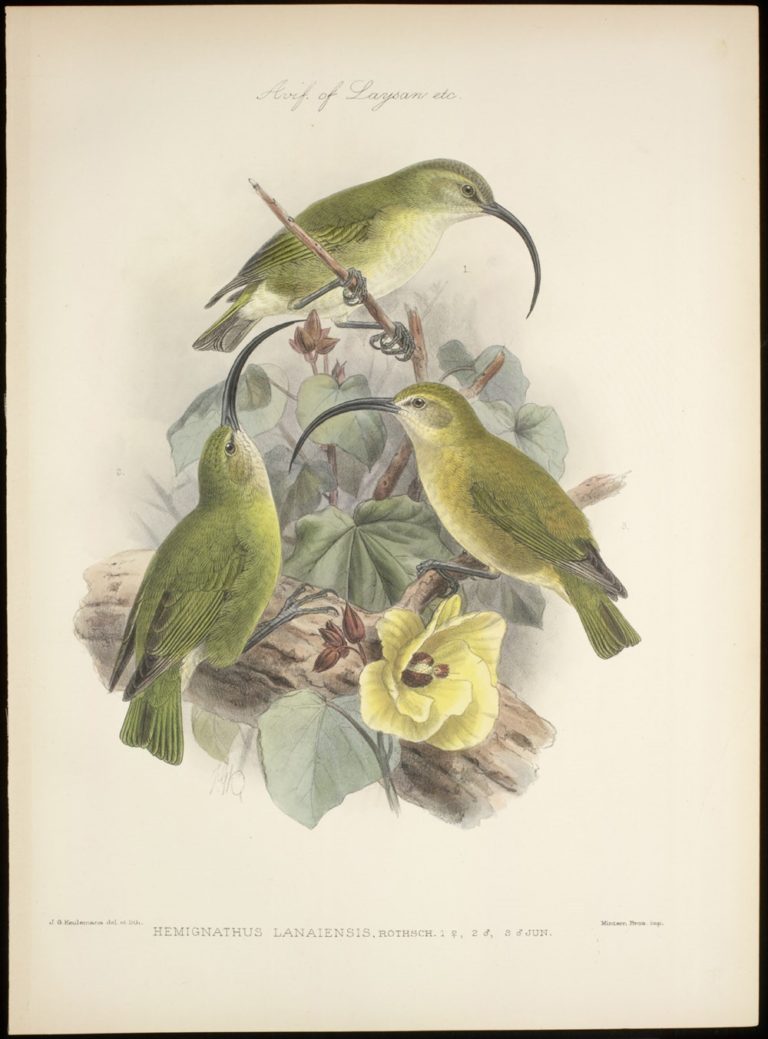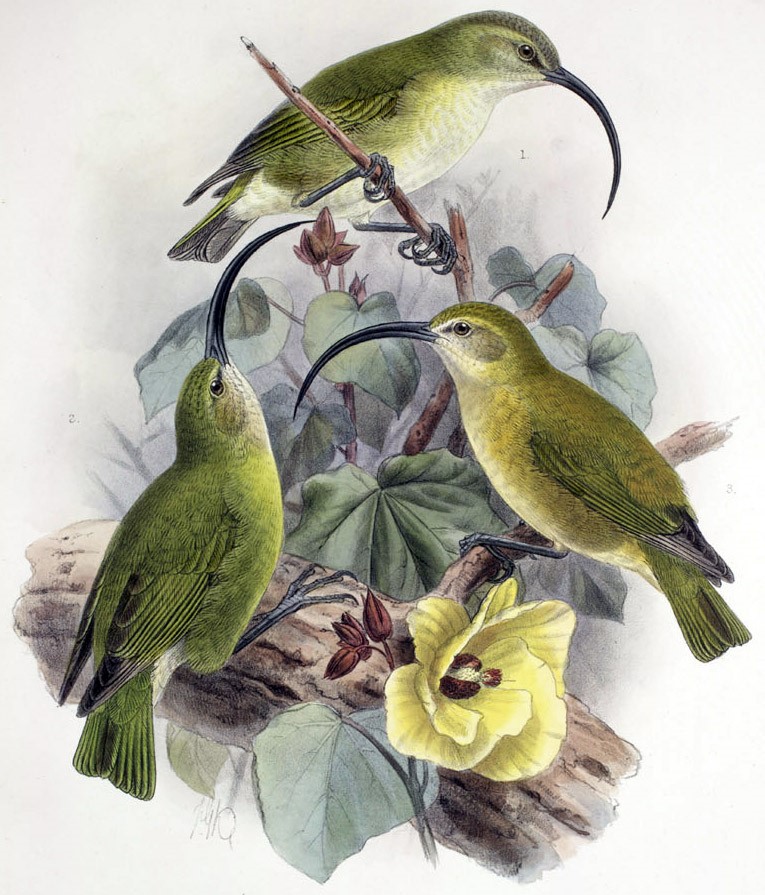Birdfinding.info ⇒ The Maui Nui Akialoa is known mainly from three specimens collected above Ko’ele from November 15 to 22, 1892. The last universally accepted record was of a male in approximately the same location on January 9, 1894. There were additional sightings at Lana’i’hale during November 1892 and another credible, but uncertain sighting of a male sometime between 1911 and 1930.
Maui Nui Akialoa †
Akialoa lanaiensis
Extinct. Formerly endemic to Lanai. Subfossil remains have been discovered on Molokai—and thus known to have been present on Maui Nui (i.e., “Greater Maui”).
Identification
A very large honeycreeper with an extraordinarily long, scimitar-shaped bill.
Male was golden-olive above and yellowish below.
Females and immatures were dull-olive above and whitish below.

Maui Nui Akialoa, male (with Kauai Akialoa below). © Paul Sweet

Maui Nui Akialoa, immature, female, and male. © John Gerrard Keulemans 1900
Notes
Monotypic species. Formerly considered conspecific with Kauai, Oahu, and Lesser Akialoas, known collectively as the Akialoa (Hemignathus ellisianus).
References
BirdLife International. 2017. Akialoa lanaiensis (amended version of 2017 assessment). The IUCN Red List of Threatened Species 2017: e.T103823431A119549974. https://dx.doi.org/10.2305/IUCN.UK.2017-3.RLTS.T103823431A119549974.en. (Accessed May 29, 2020.)
Hume, J.P. 2017. Extinct Birds (Second Edition). Bloomsbury Publishing PLC, London.
Pratt, H.D. 2005. The Hawaiian Honeycreepers: Drepanidinae. Oxford University Press.
Pyle, R.L., and P. Pyle. 2017. The Birds of the Hawaiian Islands: Occurrence, History, Distribution, and Status. Version 2 (January 1, 2017). http://hbs.bishopmuseum.org/birds/rlp-monograph/. B.P. Bishop Museum, Honolulu, Hawaii.
